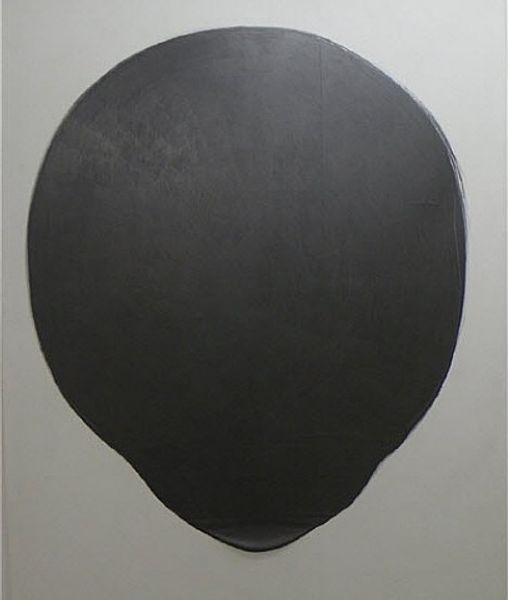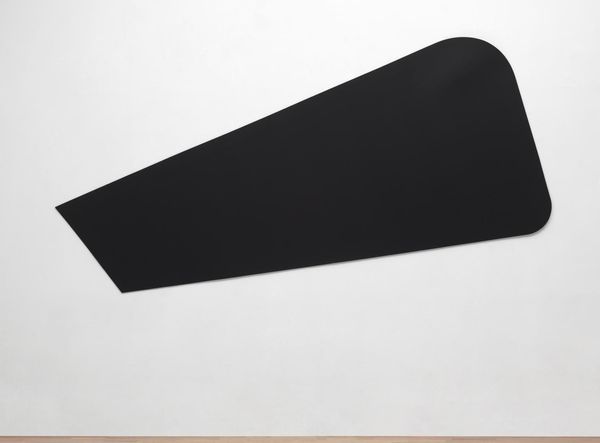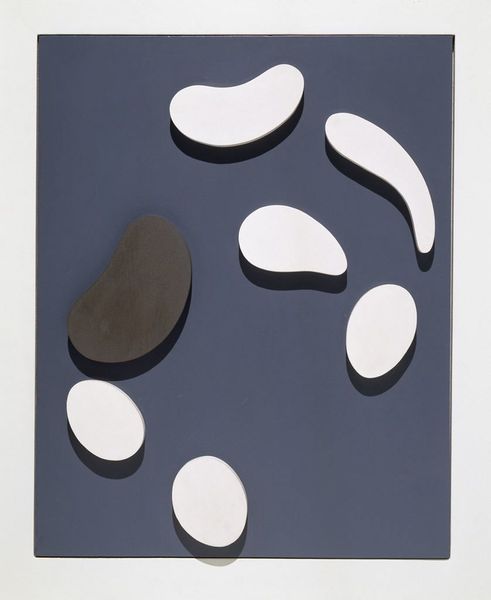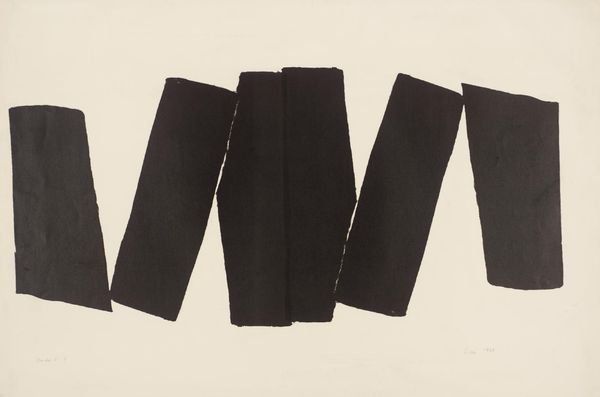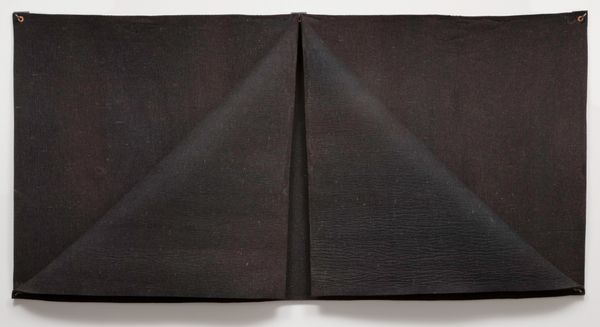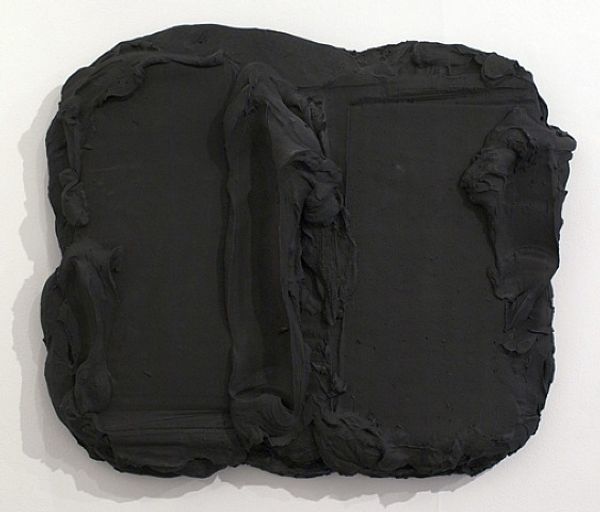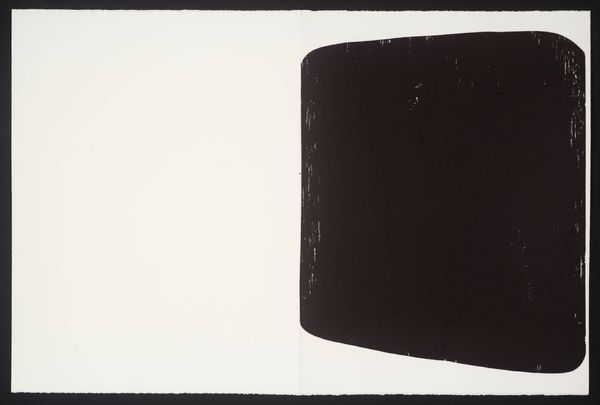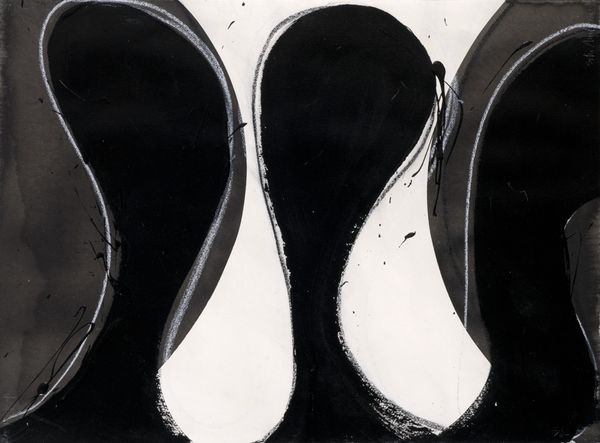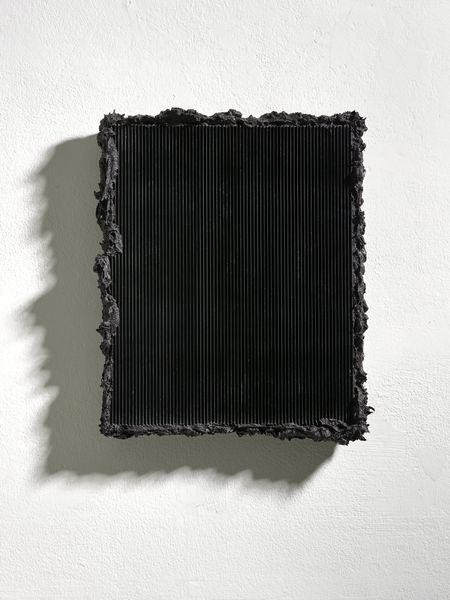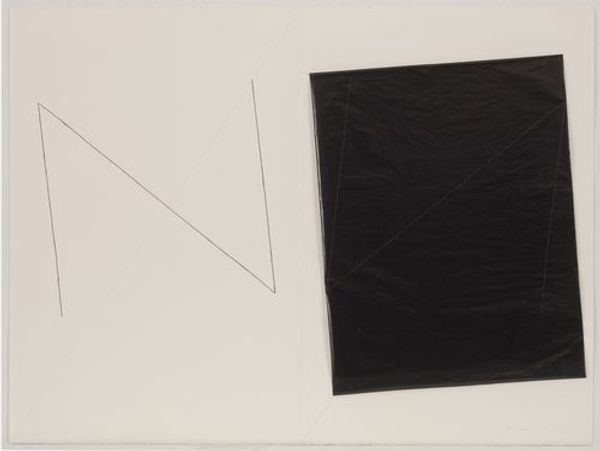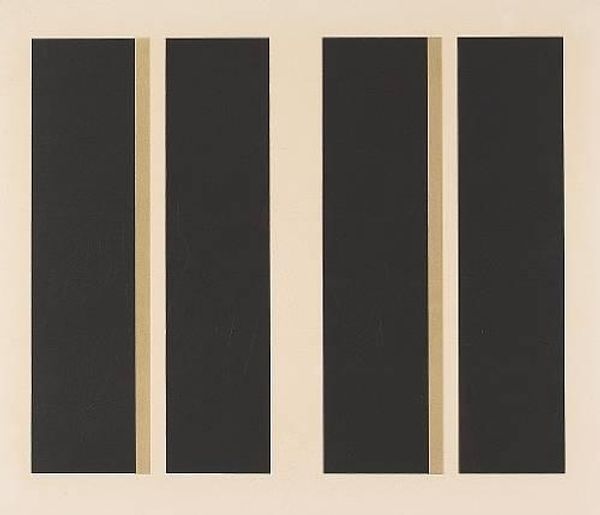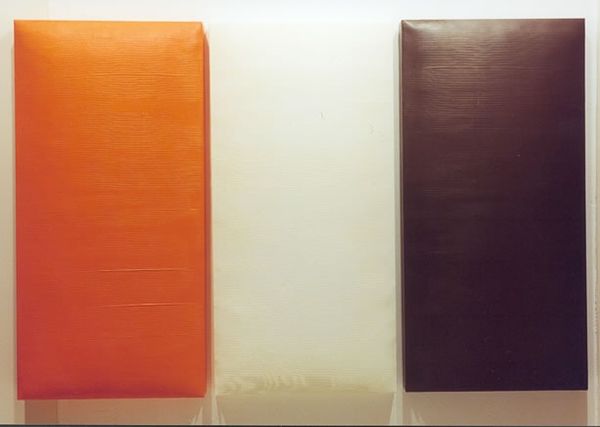
Copyright: Gary Kuehn,Fair Use
Curator: Standing before us is Gary Kuehn's "Black Painting," created in 1972 using acrylic paint. The work presents a study in monochrome and form. Editor: Immediately, I'm struck by its almost somber presence. The large black shapes seem to push outward, expanding the visual space with a weight and intensity that command attention. It feels assertive, almost confrontational. Curator: Observe how the artist has arranged three distinct geometric shapes—almost ovoid—on a single plane. Each form possesses a slightly different curvature and size, influencing the overall dynamism. Note the texture, how the monochrome almost seems to ripple and undulate. Editor: This reminds me of a moment in the late 60's and early 70's where art sought to detach itself from consumerism, creating works in response to the dominant culture and societal inequalities, expressing a sense of collective uncertainty. Kuehn uses the very materiality to convey a weighty message; black is not just a color, but a statement of resistance, a powerful presence against the backdrop of social upheaval. It provokes, invites a kind of critical self-reflection about society's structures, its shadow self, so to speak. Curator: Your points are certainly grounded in critical theory. Looking at it through a more formal lens, I find it particularly fascinating how Kuehn engages with surface and volume. The interplay of light and shadow gives it a dimensional effect that transcends the painting's flat surface, disrupting visual expectations. The texture is almost sculptural, transforming painting into an object with its own distinct presence. Editor: Indeed, Kuehn has mastered the monochrome form as an active statement, mirroring the silent, brooding awareness of his time. Through it, the work continues to inspire conversations, daring us to critically confront socio-political dynamics that shape our existence. Curator: Its deceptive simplicity pushes us to look closely, doesn't it? A fine example of mid-century abstraction at its most elemental and structurally rigorous.
Comments
No comments
Be the first to comment and join the conversation on the ultimate creative platform.
